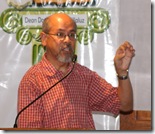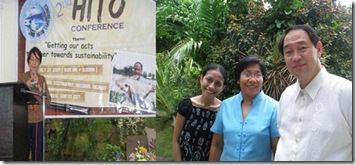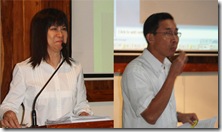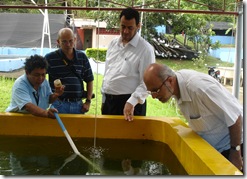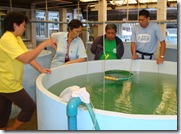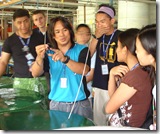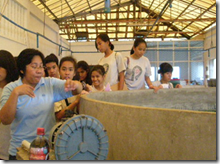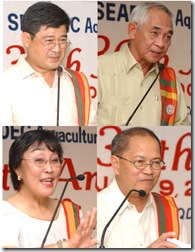 In an island like Sitangkai, Tawi-Tawi, where bounty from the sea is the source of life, its residents must find the means to sustain their resources, livelihood and ways of survival. It is difficult to do so when forces of nature and diseases brought about by environmental conditions compete with productivity and efficiency. For three pondohans in Sitangkai (Sikulan, Tinambak Lugus, and Sipangkot) whose main source of income is seaweed farming, having the Sitangkai SPE3 (Seaweed Productivity Enhancement through Education and Extension) Project introduced into their communities was the answer they were waiting for.
In an island like Sitangkai, Tawi-Tawi, where bounty from the sea is the source of life, its residents must find the means to sustain their resources, livelihood and ways of survival. It is difficult to do so when forces of nature and diseases brought about by environmental conditions compete with productivity and efficiency. For three pondohans in Sitangkai (Sikulan, Tinambak Lugus, and Sipangkot) whose main source of income is seaweed farming, having the Sitangkai SPE3 (Seaweed Productivity Enhancement through Education and Extension) Project introduced into their communities was the answer they were waiting for.
The SPE3 Project is supported by the Philippine Development Assistance Programme, Inc. (PDAP), a non-stock, non-profit organization which aims to reduce poverty and inequity in the Philippines. PDAP is promoting and developing rural enterprises for poverty reduction as a tool in promoting peace in conflict-affected areas.
In these pondohans (a cluster of communities composed of 35-100 households engaged in seaweed farming), conditions of living are hard, and accessibility to basic needs such as food, potable water, medicine and education are difficult to come by. The parents of most children in the pondohans find it expensive to send them to school, so they are introduced instead to an early life of helping with the family's main source of income, seaweed farming. Most of the children have never gone to school. Others who entered elementary schooling had to stop because of the high cost of transportation. Furthermore, farmers in the pondohans often end up losing in their seaweed farms because of diseases and pests. This leaves the farmers unable to pay for their financial obligations.
And so the SPE3 Project was developed and formally launched on October 27, 2007 to address such issues concerning education and poverty by enhancing the skills of Sitangkai's youth seaweed farmers. They were provided with the latest seaweed farming technology and knowledge to improve productivity in their yield and ensure quality harvests and to later serve as extension workers and trainers for their individual communities in Sitangkai. The project also focused on basic literacy through alternative learning, skills for life (SFL) and life skills for employability (LSE) lessons, arts for creative development and fun, group dynamics and team building, and subjects that concentrate on the development of discipline, values, and good moral character among the youth.
The project started with 130 registered youth trainees from the three project areas on its first month of implementation, with 39 coming from Sikulan, 32 from Tinambak Lugus, and 41 from Sipangkot. These numbers were made up of 15-25-year-olds who were mostly non-literates.
SEAFDEC/AQD Visiting Scientist Dr. Anicia Hurtado provided technical skills training on season-long seaweed productivity improvement. The techniques imparted to the trainees are the results of SEAFDEC/AQD’s decades-long research-and-development on seaweeds.
The first classes were held in improvised classrooms (either in the pondohan leader's house or a makeshift barangay multipurpose hall) because of the lack of educational facilities in the communities. One hundred nine (109) trainees from the first batch were able to graduate from the program with impressive growth and noticeable changes in several areas of their lives.
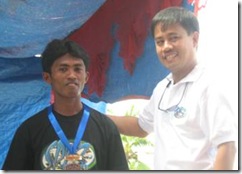 One of the outstanding turnouts from the first batch was Mr. Julpie Abdul, a core leader of the trainees who was one of the first to implement the new technology he had on his crops. He said that formerly, he could only make 300 lines and these would be in danger of being ruined by pests. With SPE3's intervention, his ideas on how to enhance the productivity of his crops and keep them away from diseases were broadened. Now he is able to make twice, sometimes more, of what he yielded before. In addition to teaching these successful techniques to his peers on the island, he also helped a handful of them to read and write. He later added that he now sees a brighter future for seaweed farmers like himself.
One of the outstanding turnouts from the first batch was Mr. Julpie Abdul, a core leader of the trainees who was one of the first to implement the new technology he had on his crops. He said that formerly, he could only make 300 lines and these would be in danger of being ruined by pests. With SPE3's intervention, his ideas on how to enhance the productivity of his crops and keep them away from diseases were broadened. Now he is able to make twice, sometimes more, of what he yielded before. In addition to teaching these successful techniques to his peers on the island, he also helped a handful of them to read and write. He later added that he now sees a brighter future for seaweed farmers like himself.
Another story is of Mr. Jarson Jalain, another core leader in Sikulan, who was one of the first enrollees of the project. He wasn’t that cooperative or interested in the lessons at first. With some of the boys, he would make jokes in the classroom and take most of the lessons lightly. During the course of the project, he was able to see the effects that the project was doing for him and his community. He said that with the lack of education in the techniques and methods of farming, most of his crops were spoiled by diseases, resulting to very low yields. But now, with the knowledge he got from SPE3, he was able to increase his yield up to 7000 lines more, whereas he could only make up to 1000 before. Because of his good harvests, he is now happily married. He was able to provide a dowry from his income from seaweeds and support his newly formed family.
But the most surprising result of them all was of Mr. Ummik Sabung, who successfully harvested a total of PhP100,000 from his initial PhP1,000 capital. Ummik, who was the silent one in the group and didn’t always stand out, was able to of carefully implement the additional knowledge taught him. He was able to have enough to buy two small motorized boats, a television set, and is now the primary breadwinner of his family. In an interview, he shared that before the project, he was hardly able to make any good harvests because diseases like “ice-ice” spoiled them. When the SPE3 project came in, he was able to improve his seaweed farming by applying the different techniques and methods he learned. He also added that in the past, he would plant up to 600 lines but due to unavoidable diseases, his production decreased. But today, with the new learnings from SPE3, he was able to avoid, if not totally control, the occurrence of these diseases. This has allowed him to make up to 100 lines more per cropping. Nowadays, Ummik is considered as one of the wealthiest seaweed farmers in his island of Sikulan, and is now a quality seedling provider for other seaweed farmers there.
These three graduates are only a few of those who have success stories to tell of their SPE3 experience. With their newly-acquired skills and technology for their farming, the SPE3 Project beneficiaries were able to improve the rate and amount of their produce and income. The participants also turned out to be more equipped as individuals, with enhanced personal, educational, financial, and social status. The SPE3 Project has truly planted seeds that will continue to grow and bear fruits, ready to harvest anytime in the future. – by Alfred Allaga, SPE3 Project Leader, Philippine Development Assistance Programme, Inc. (PDAP)
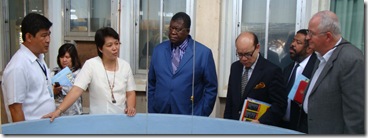
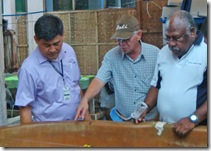

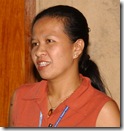
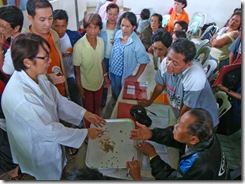
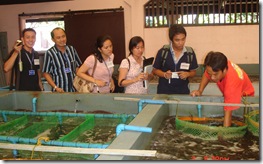

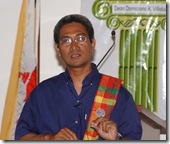 talked about the Temporal trends of sea surface temperature in the Philippines and some possible consequences, Dr. Siringan revealed that sea surface temperatures (SST) around the Philippines and its internal seas are getting warmer. Data also showed that the seas along the Pacific seaboard warmed by about 1.5°C over the past 90 years at a rate accelerating over the past 25 years.
talked about the Temporal trends of sea surface temperature in the Philippines and some possible consequences, Dr. Siringan revealed that sea surface temperatures (SST) around the Philippines and its internal seas are getting warmer. Data also showed that the seas along the Pacific seaboard warmed by about 1.5°C over the past 90 years at a rate accelerating over the past 25 years. 